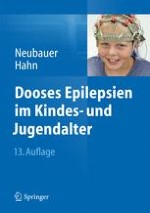2014 | OriginalPaper | Buchkapitel
7. Verlaufsformen von Epilepsien mit primär generalisierten Anfällen (idiopathische generalisierte Epilepsien)
verfasst von : Prof. Dr. B. Neubauer, PD Dr. A. Hahn
Erschienen in: Dooses Epilepsien im Kindes- und Jugendalter
Verlag: Springer Berlin Heidelberg











